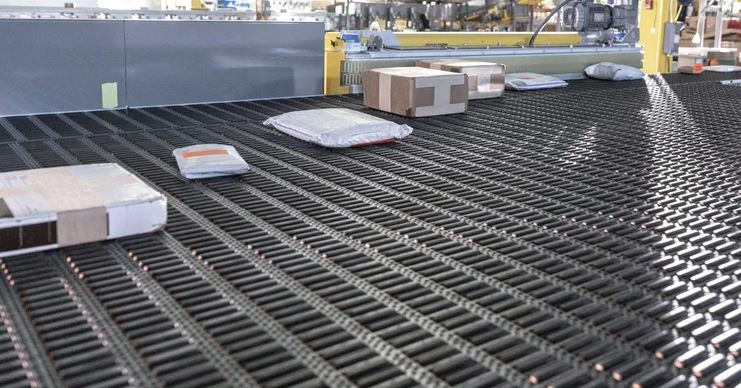Insights: Manufacturing Gender Gap, Automation Pitfalls to Avoid
What are the implications of labor and industrial market changes?

Where can automation cause issues? Intralox explores the pitfalls of downtime and the ways to address it below. We also examine issues relating to recruiting women to manufacturing careers, the need to reshore, Tennessee’s efforts to build a modern industrial workforce, and more.
Tackling Manufacturing’s Gender Gap
According to Jennifer Johnson of Avande North America, women comprise a little more than 1 in 4 manufacturing workers. They’re outnumbered 5:1 when it comes to leadership positions in the industry. This disparity goes back to a fundamental issue, not only of fairness, but of flexibility: the manufacturing sector is chronically short of labor today, and will be squeezed even more moving forward. It can’t afford to not be more involved with women if the sector hopes to adequately staff operations.
Key takeaways:
- Manufacturing lags behind most other industries at recruiting women to its workforce, even as the sector is chronically short of employees.
- Currently, the pool of qualified candidates is nowhere near large enough to fill the pipeline. Manufacturers must work to bridge that gap.
- Changes in corporate policies are needed to encourage women in the industry.
- Women aren’t usually portrayed as manufacturing workers in media and entertainment.
Read more: How Material Handling and Automation Increases Labor Flexibility
Intralox: Avoid Costly Pitfalls When Integrating Automation Into Your Operation

Automated systems are only as good as the processes they support and the plans made to create them. Intralox, a manufacturer of specialized belting and sorters, advises industrial operations to avoid these common four pitfalls.
Mitigating downtime risks in automated systems
- Install redundant packaging equipment: Yes, that means to use two when one would do. Why? Because high-speed systems require redundancy to prevent operational shutdowns or unaffordable disruptions and bottlenecks. In many operations, a single packaging machine–a void filler, say–is the only one of its kind at the very end of a long fulfillment or pick line. If it’s down, everything upstream of it is also down, or at least severely slowed.
- Utilize equipment with excess capacity and upstream accumulation: To do this, you need to identify your must critical machine and the systems that feed it. When upstream, this lets you accumulate product upstream and downstream of that critical production point even if it is temporarily offline. Downstream, it allows accumulation when those systems are unavailable. You can uses vertical systems to overcome space constraints.
- Divert to manual processes: Manual processes are what you tried to escape when you automated, but when systems are offline, you should have a plan to take advantage of the capacity. If your packaging systems were manual before, they can be manual again while systems are down. This may be less practical, as you’ve likely re-tasked that labor, but it is a way to deal with offline systems. Accumulation and redundancy are expensive and sometimes impractical, so manual systems are a viable alternative.
- Do nothing: While this sounds impossible, it’s not uncommon. When downtime is infrequent, repair times short and KPIs allow it, allowing some downtime is a viable option.
Read more: Conveyors: Optimizing the End of the Line
Peter Zeihan: “The greatest reindustrialization process in American history”
Geopolitical strategist Peter Zeihan discusses the “great reindustrialization” happening in the United States, its root causes and the path ahead.
He stresses that American manufacturing concerns decided post-Covid to shorten supply chains. During the pandemic era, industrial construction doubled…and has now doubled again. Petrochemicals, base materials, automotive and other base manufacturing join with new green supply chain spending to drive the growth. The downside? We’re likely to see inflationary pressures over the next few years as new plants absorb land, labor, energy and materials when they’re built.
Manufacturing construction spending continues to accelerate
Construction Spending for Factories Soars, after Decades in the Doldrums.
Driven by manufacturing plants for technologically advanced, high-value products. Automation is the great equalizerhttps://t.co/xqCBd7W0Pk pic.twitter.com/a1DOvjP2Ug— Wolf Richter (@wolfofwolfst) September 4, 2023
Quick hits
- Bloomberg reports on Tennessee’s efforts to bolster its manufacturing sector in “The U.S. is Building Factories Again, But Who Will Work There?”. The state of Tennessee is investing in free technical school, partnering with corporations and taking advantage of Federal and State incentives to drive manufacturing in the state. This has paid off in plants that manufacture electric vehicles, battery cells and more.
- The Wall Street Journal reports that “A Red-Hot Market for Warehouse Workers Has Cooled Off.” Warehousing has been one of the top hiring segments in the American economy over the last decade, with the sector hiring over 700,000 workers during the pandemic era. With rising wages and competition for employees, some warehouses are trying to wait the situation out. Ecommerce spending may have slowed, which also gave distribution operations some employment growth breathing room.
- For a number of reasons, American manufacturing is in one of its greatest periods of growth ever. Freightwaves lays out the challenges that go along with that growth in “Bringing manufacturing back to America.” While this isn’t exactly news, the article covers ground like the effect on internal supply chains, transportation, trucking and more. To compete for global manufacturing, the article says, America must focus on automation, advanced manufacturing techniques and reduction of labor concerns.
Scott Stone is Cisco-Eagle's Vice President of Marketing with more than thirty years of experience in material handling, warehousing and industrial operations. His work is published in multiple industry journals an websites on a variety of warehousing topics. He writes about automation, warehousing, safety, manufacturing and other areas of concern for industrial operations and those who operate them.



